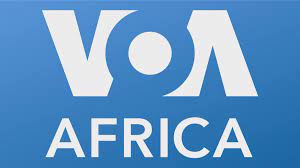US Takes Up China’s Infrastructure Mantle in Africa

The U.S. State Department confirmed that Washington’s plan to refurbish and extend the Lobito Corridor — a railway that will run through mineral-rich Zambia and the Democratic Republic of Congo to an Atlantic port in Angola — is moving full steam ahead.
Such ambitious infrastructure investments by other powers in Africa have been derailed in the past. For years, China has tried with mixed results to increase its influence in Africa and boost trade connectivity by investing in ports and railways.
Debt-incurring or unfinished projects undertaken as part of Beijing’s Belt and Road Initiative, or BRI, have been criticized, prompting what analysts see as a new focus on what Chinese President Xi Jinping has called a "small and beautiful" approach.
Now the West is stepping in, with the U.S., European Union, the three African nations and two financial institutions signing a memorandum of understanding last month to develop the partially existing Lobito Corridor.
Plans were outlined in an online media briefing this week, and a six-month feasibility study is expected to start before the end of the year, said Helaina Matza, the acting special coordinator for the Partnership on the Global Infrastructure Investment, or PGII. The intention is to get the 800 kilometers (500 miles) of new track built within five years at an estimated cost of more than $1 billion, she said.
When asked how the U.S. plans to sustain the project long-term and avoid the mistakes made by other foreign powers pursuing infrastructure projects on the continent, Matza was optimistic.
"It’s not all concessional financing going directly to governments," she said, noting that a private partner, the Africa Finance Corp., is involved and will be putting "forward a plan for operation and maintenance and putting forward a plan around capacity development."
While not mentioning China directly, she said: "I think we’ve learned from mistakes and projects that over the years, frankly, we’ve helped bail out because they needed refurbishment a little too quickly."
Liu Pengyu, China’s Embassy spokesperson in Washington told VOA in an emailed response that there is "broad space for cooperation in the field of global infrastructure, and there is no question of various relevant initiatives contradicting or replacing each other."
Liu also denied the frequent criticism that Beijing is using BRI and its projects to create spheres of influence.
"Any calculation to advance geopolitics in the name of infrastructure development is not welcome and doomed to fail," he said.
Lessons from the BRI?
One of China’s largest BRI investments was the $4.7 billion Standard Gauge Railway in Kenya, which started operating in 2017 and connects the capital, Nairobi, with the port city of Mombasa.
The railway was supposed to connect to neighboring Uganda, as a way of bringing critical minerals to the coast, but it never got that far, leaving the cargo side of the business struggling. This week the Kenyan government announced a sharp increase in fares for passengers, citing rising fuel prices.
The announcement came on the heels of President William Ruto’s visit last month to China, where he was seeking a $1 billion loan to complete unfinished infrastructure projects. Some Kenyans have also criticized the project for not hiring enough locals to operate the railway.









